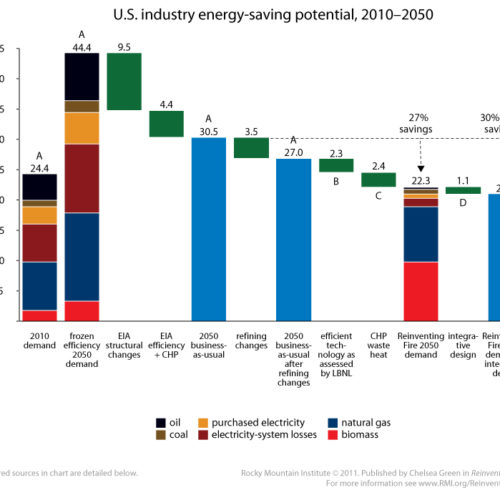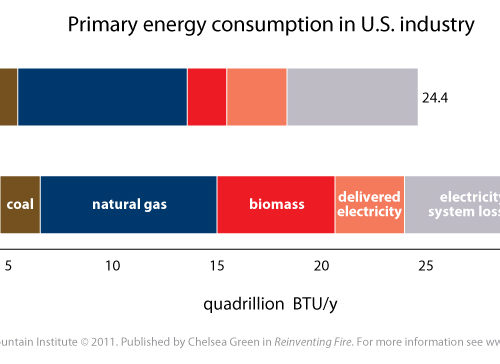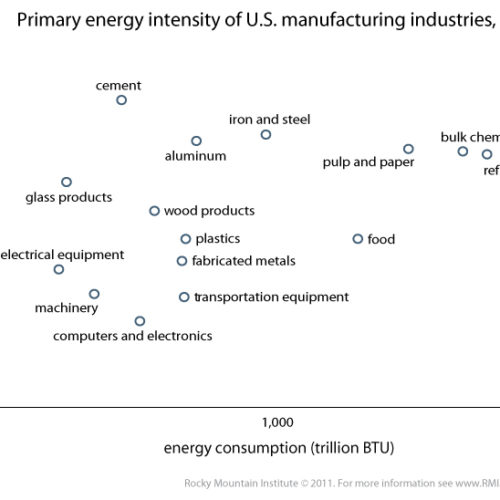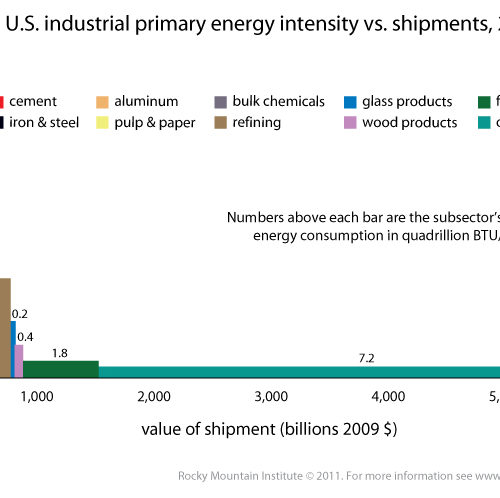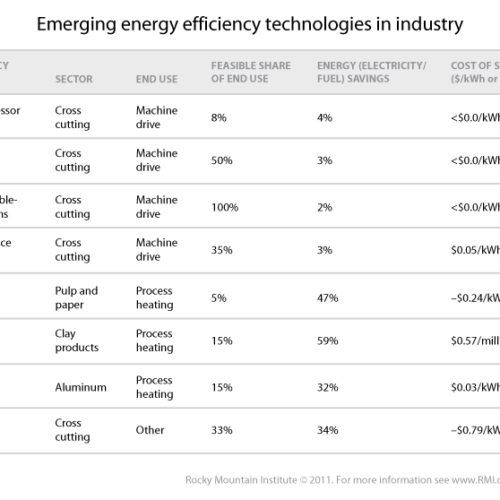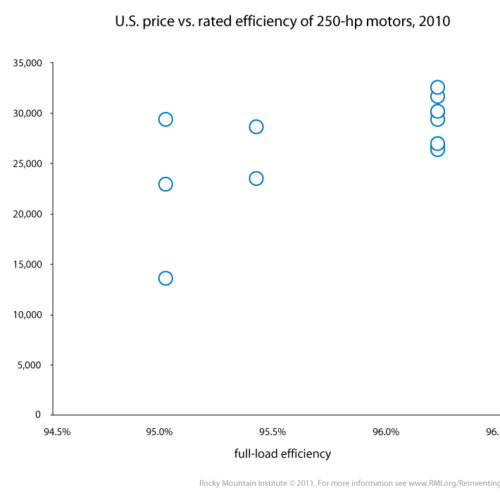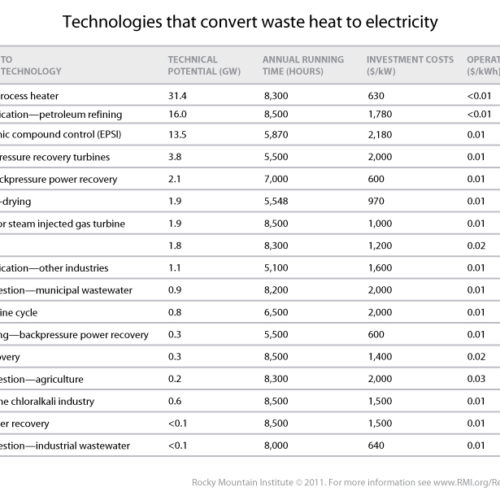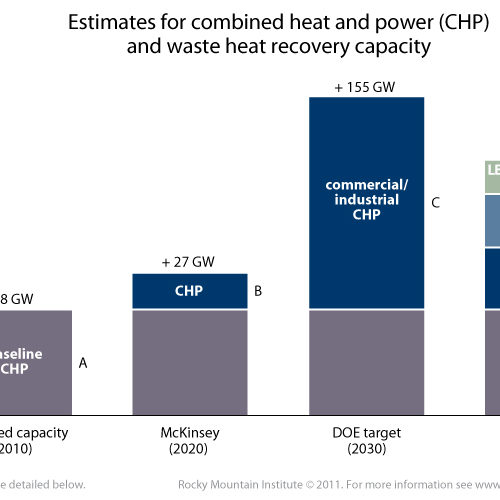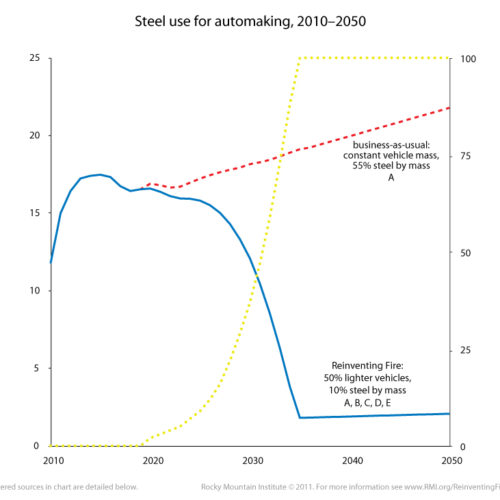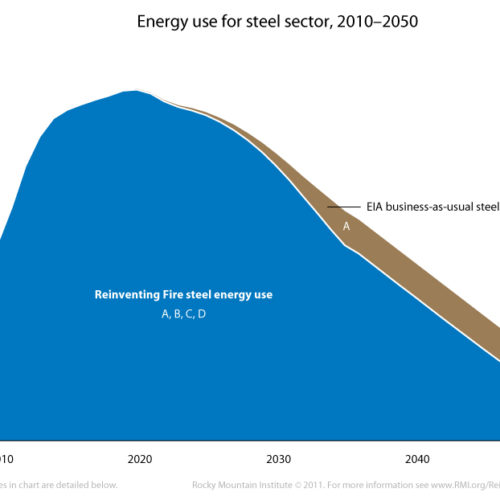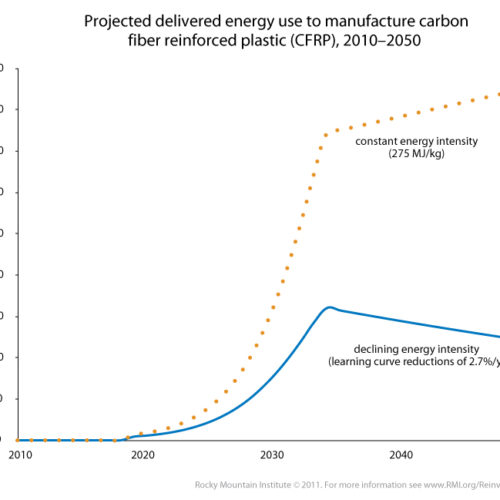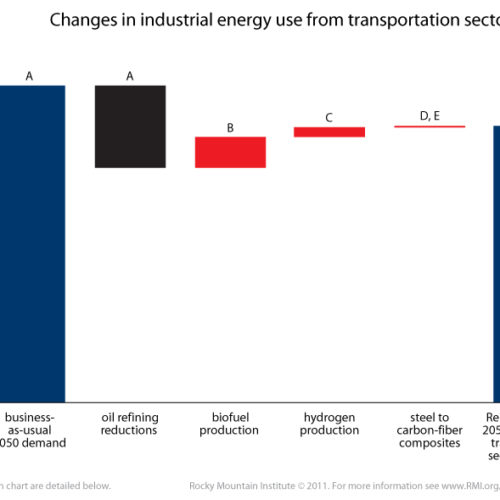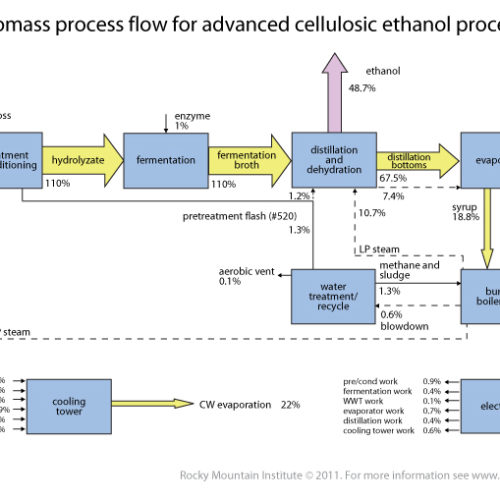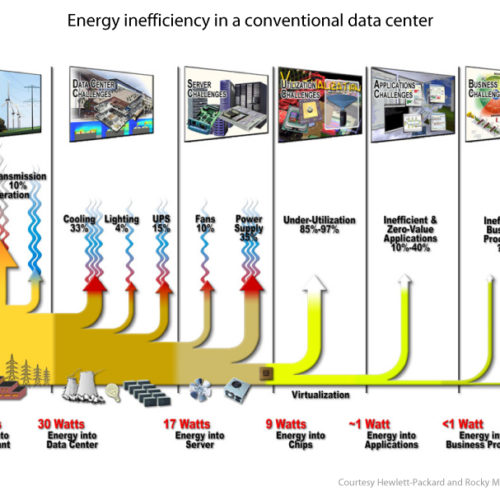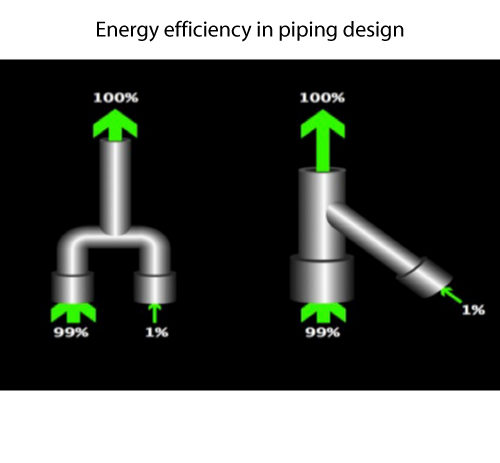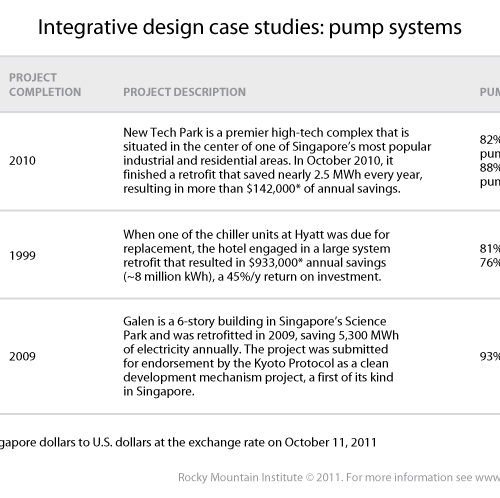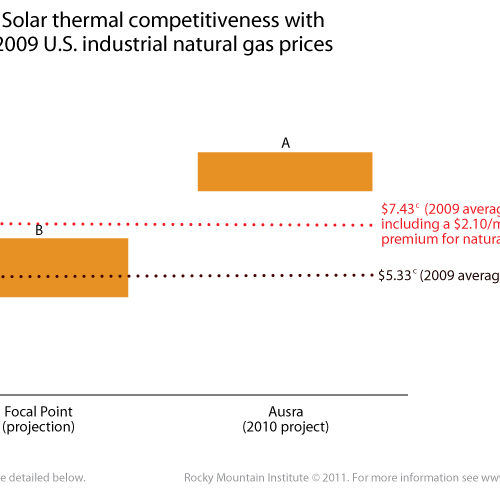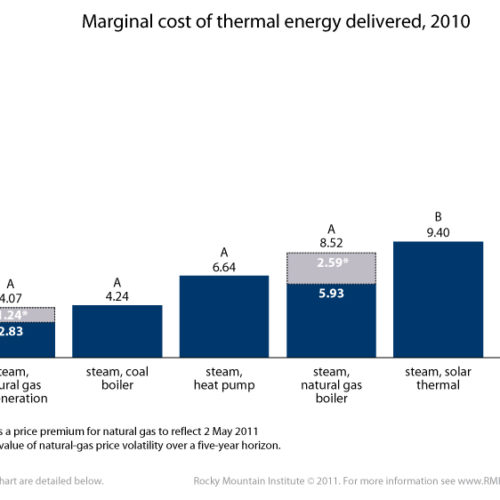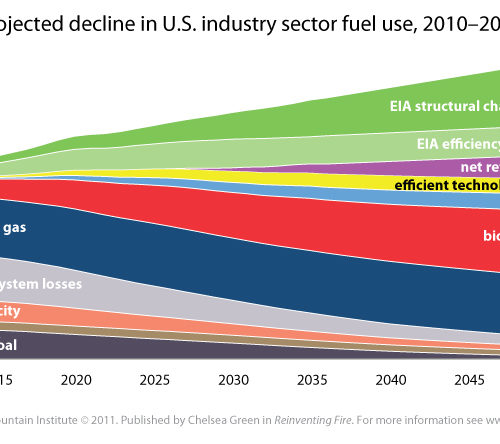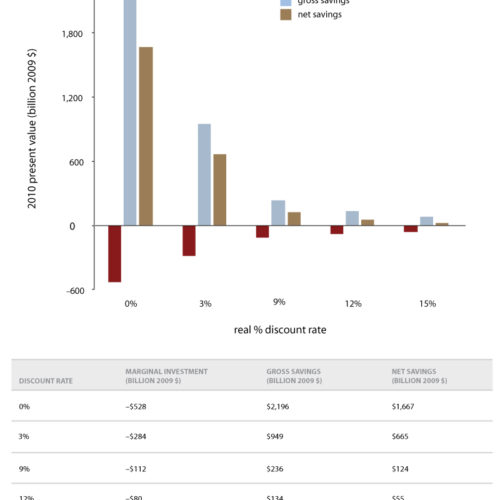Increased adoption of energy efficient technologies as well as cogeneration and waste heat recovery systems will reduce energy use by an additional 4.7 quadrillion BTUs from business-as-usual. These and other changes (energy changes due fuel switching or transformation in other sectors) can reduce projected primary energy use by 27% in 2050.
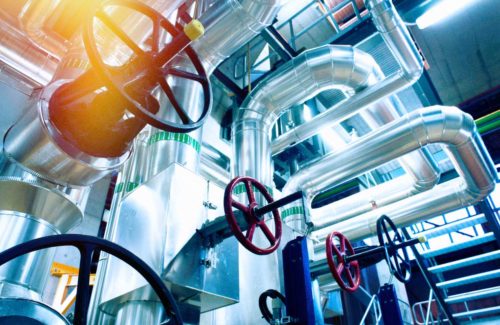
Book | 2011
Reinventing Fire Industry Research
Below are all charts related to the industry research for Reinventing Fire.
Energy use for U.S. industry is conventionally projected to grow from 24.4 quads in 2010 to 30.5 quads in 2050. In 2010, more than four-fifths of energy use in U.S. industry came from fossil fuels. Natural gas is the dominant source of energy (~35%).
Industry has a huge variety of subsectors that differ markedly in energy consumption and intensity (energy used per $ of shipment).
Source: RMI analysis based on: U.S. Energy Information Administration. 2010. Annual Energy Outlook 2010. May 11.
This chart depicts the 2010 primary energy intensities of U.S. industry by subsector versus shipments.
Source: U.S. Energy Information Administration. 2010. Annual Energy Outlook 2010. May 11.
Based on Lawrence Berkeley National Laboratory (LBNL) technology reports, a number of measures were considered for adoption. This table features a sampling of these measures, with information on each measure’s technical potential, associated energy savings, and cost.
Premium-efficiency motors are normally assumed to cost more because they use more and better copper and iron. Yet analysis of all models on the 2010 U.S. market, in this case for 250 hp (TEFC, NEMA Type B) shows this is untrue despite standards’ having knocked the least efficient models off the market.
Based on a Lawrence Berkeley National Laboratory (LBNL) report on technologies that generate electricity from waste heat (and other waste energy sources), our analysis adopted the options summarized in the table.
RMI analysis predicts a net increase of industrial combined heat and power (CHP) installations of 109 GW, split between traditional cogeneration units and waste heat recovery to electricity systems.
The shift from steel to carbon fiber in the transportation sector reduces steel production. With the rapid adoption of lightweight vehicles, RMI estimates that, in 2050, the auto industry will require one-fifth the steel used in 2010.
Projected reduction in U.S. steel demand will reduce the energy required by the industrial sector by 111 trillion BTU/y in 2050.
Sources: RMI analysis based on:
U.S. Energy Information Administration. 2010. "Annual Energy Outlook 2010 Iron and Steel Industries Energy Consumption, Reference Case." May 11.
U.S. Geological Survey. 2005. "Iron and Steel Product End-Use Statistics." September 1.
Autodata Corp. 2011. "Total U.S. Light Vehicle Retail Sales."
World Steel Association. “About automotive steels.” World Steel Association.
Energy to manufacture the required carbon fiber reinforced plastic (CFRP) used in the transportation sector is 45–120 TBTU/y by 2050. Future reductions in energy intensity and the use of recycled materials could further reduce this.
Carbon fiber production is more energy intensive than steel production (by mass). However, because revolutionary autos will require less body mass, there are significant opportunities for energy reduction in the auto manufacturing industry.
Sources: RMI analysis using data from:
World Steel Association. 2011. “Selection and Design for Car Door Outer Panel.” Steel University.
Suzuki, Tetsuya and Jun Takahashi. 2005. “Prediction of Energy Intensity of Carbon Fiber Reinforced Plastics for Mass-Produced Passenger Cars.” Japan International SAMPE Symposium, December 29.
Transformations in the transportation sector will have the net effect of saving half of refining energy, cutting 2050 industrial energy use by 3.5 quads/y.
Sources: U.S. Energy Information Administration. 2010. “Annual Energy Outlook 2010 Macroeconomic Indicators Reference Case.”
Aden, A. et al. 2002. Lignocellulosic Biomass to Ethanol Process Design and Economics Utilizing Co-Current Dilute Acid Prehydrolysis and Enzymatic hydrolysis for Corn Stover. National Renewable Energy Laboratory, Harris Group, June.
H2Gen Innovations, Inc. 2011. Personal communication with author, March.
For a 2000 scf/h system, we assumed 78% HHV fuel efficiency (for natural gas to hydrogen) with 10–15 kW electricity consumption.
Suzuki, Tetsuya and Jun Takahashi. 2005. “Prediction of Energy Intensity of Carbon Fiber Reinforced Plastics for Mass-Produced Passenger Cars.” Japan International SAMPE Symposium, December 29.
U.S. Geological Survey. 2005. "Iron and Steel Product End-Use Statistics". September 1.
There are different types of biofuels as well as processes to create them. RMI analysis uses the National Renewable Energy Laboratory’s cellulosic ethanol process from corn stover as the basis for processing biofuels for the transportation sector.
Source: Courtesy National Renewable Energy Laboratory
Starting the savings downstream at a typical data center can achieve leverage of 10- or even 100-fold in saved fuel back at the power plant.
There are simple but important opportunities to save energy through improved piping design. For instance, pipes are often laid out at right angles rather than in a geometry that minimizes friction and cost.
Based on discussions with engineer Eng Lock Lee, a well–engineered redesign of many pumping systems will yield 80–90% savings. In these examples, many of these savings came from piping enhancements, the use of variable speed drives, digital sensors, the removal of oversized equipment, and high-efficiency equipment.
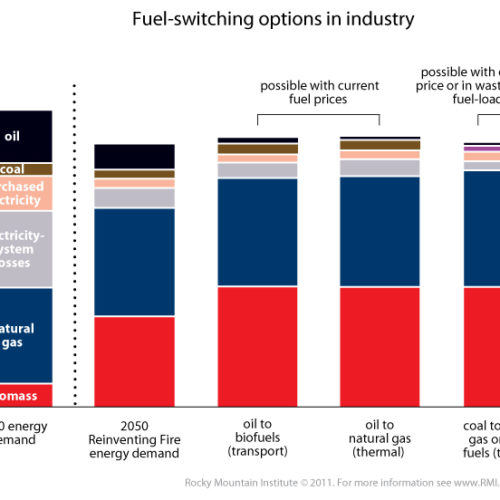
With current fuel prices, most coal and oil use can be switched to natural gas for process heating needs.
Sources: RMI analysis based on:
U.S. Department of Energy. “Annual Energy Outlook 2010 Energy Prices by Sector and Source, United States, Reference Case.”
Xu, Tengfang, J. Slaa, and J. Sathaye. 2010. Characterizing Costs and Savings Benefits from a Selection of Energy Efficient Emerging Technologies in the United States. Lawrence Berkeley National Laboratory.
Martin, N., E. Worrell, M. Ruth, L. Price, R. Elliott, and A. Shipley. 2000. Emerging Energy-Efficient Industrial Technologies. Lawrence Berkeley National Laboratory.
Bailey, Owen, and Ernst Worrell. 2005. Clean Energy Technologies: A Preliminary Inventory of the Potential for Electricity Generation. Lawrence Berkeley National Laboratory, April.
Given the high volatility of natural gas prices, pricing for solar thermal projects on a lifecycle cost of heat basis can be competitive with natural gas.
Cogeneration with natural gas delivers the cheapest heat. With higher fossil fuel costs, heat pumps and solar thermal heat will become increasingly competitive sources of thermal energy.
Net refining, efficiency and CHP savings can reduce industrial sector primary energy use 27% below the 2050 “business-as-usual” forecast despite 84% higher industrial production.
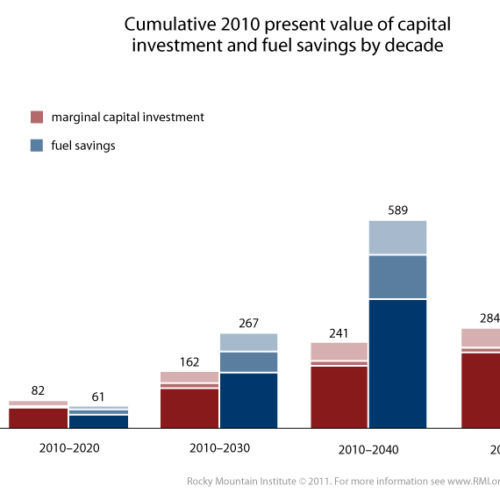
Increased adoption of energy-efficient technologies and combined heat and power (CHP) invest $0.28 trillion to save $0.95 trillion in energy costs by 2050, creating $0.66 trillion in net wealth and strong competitive advantage.
Present-valued at a 3%/y real discount rate, an investment of $284 billion returns more than $949 billion in saved industrial energy. Naturally, the net return shrinks at very high discount rates.
